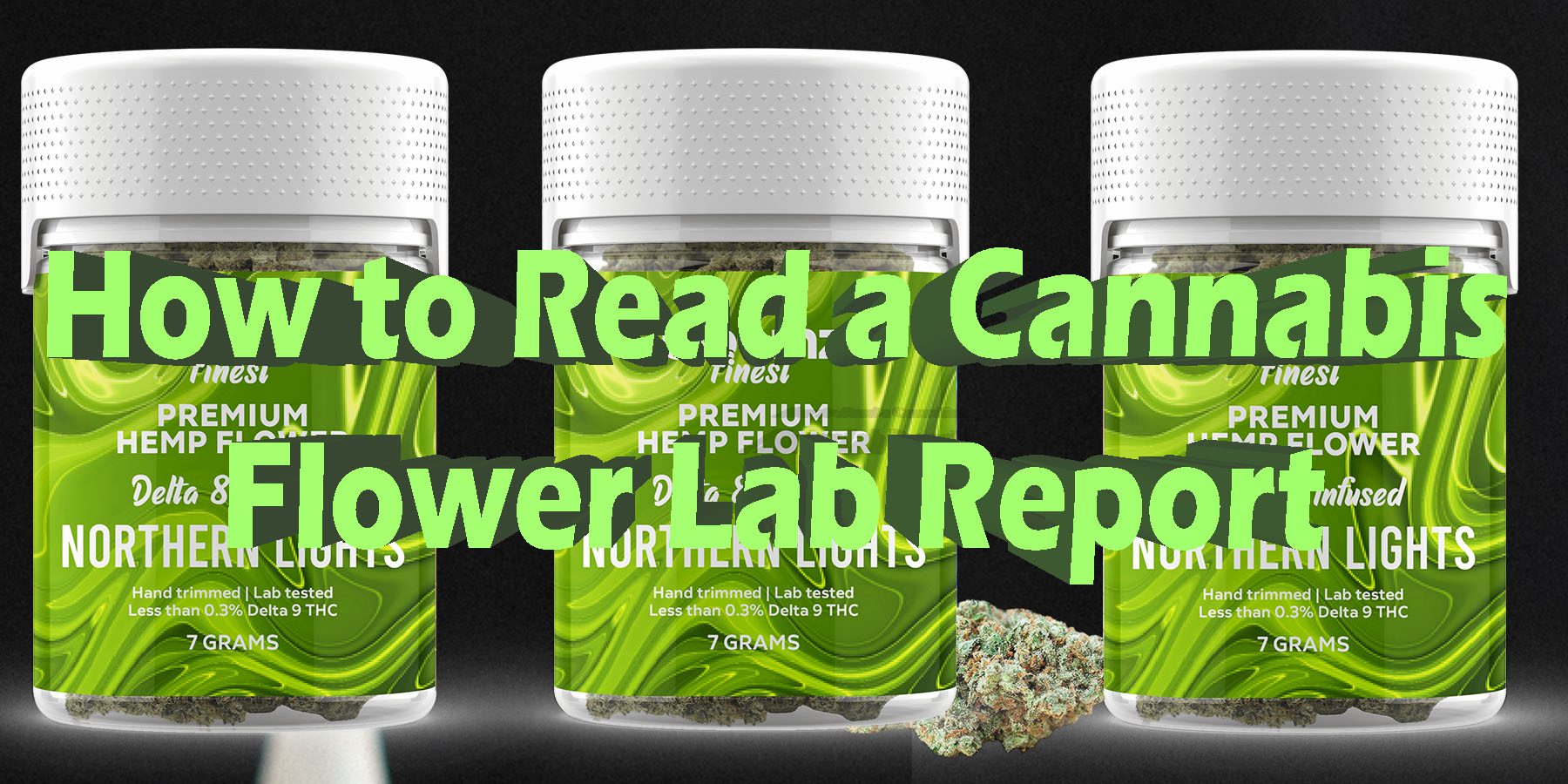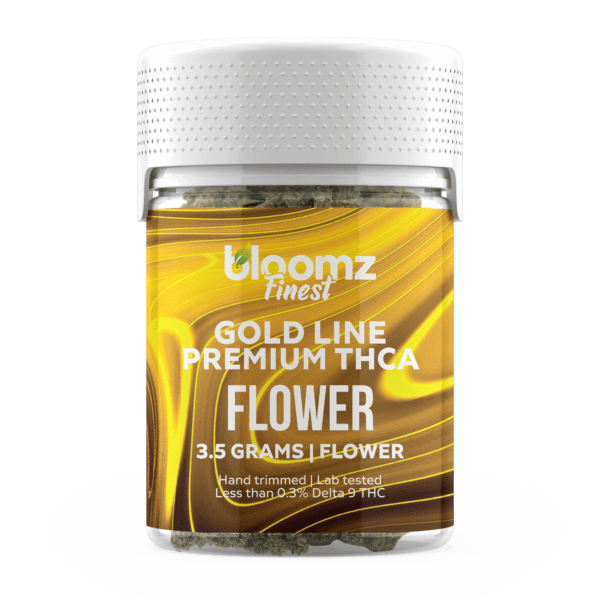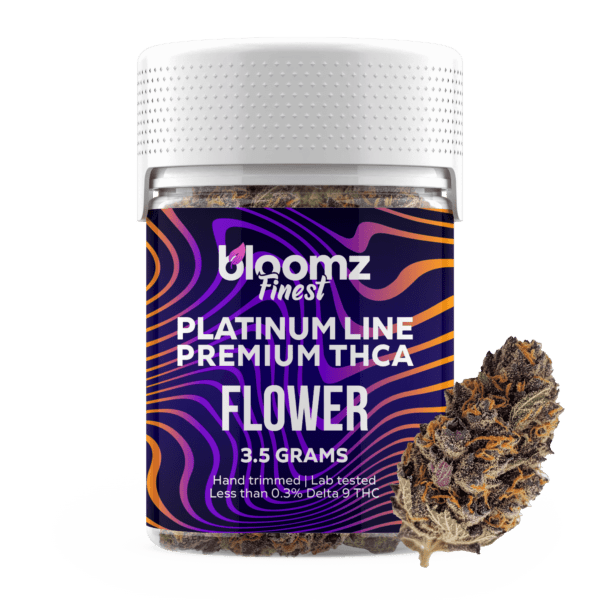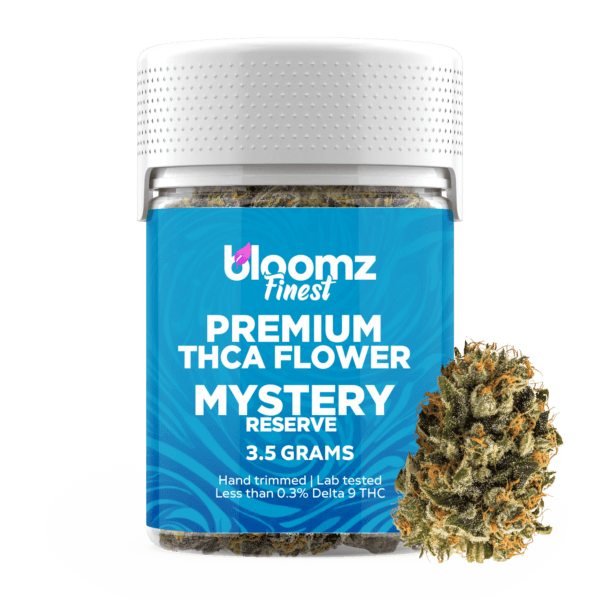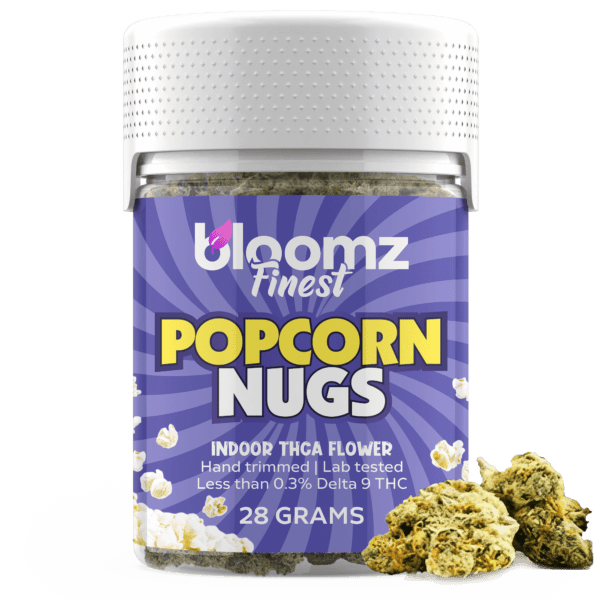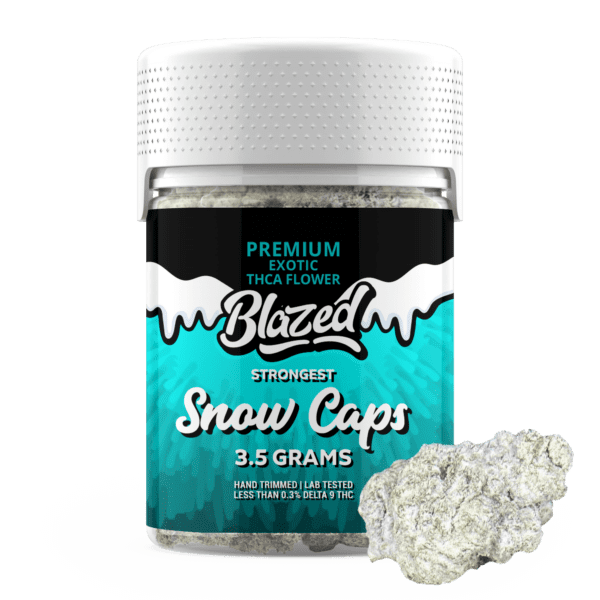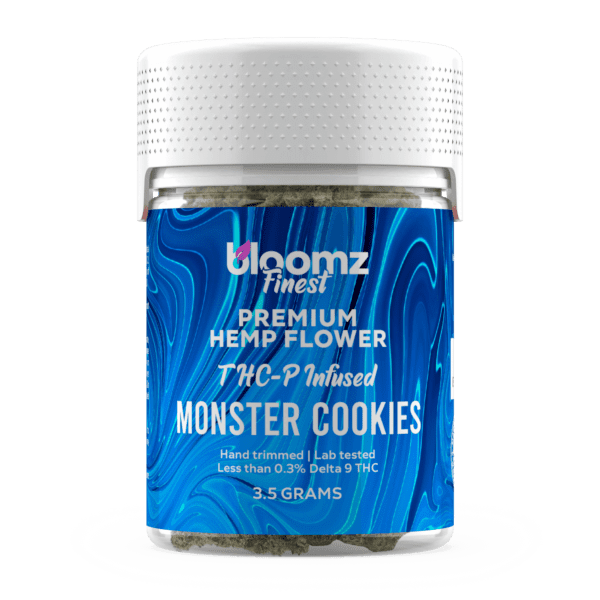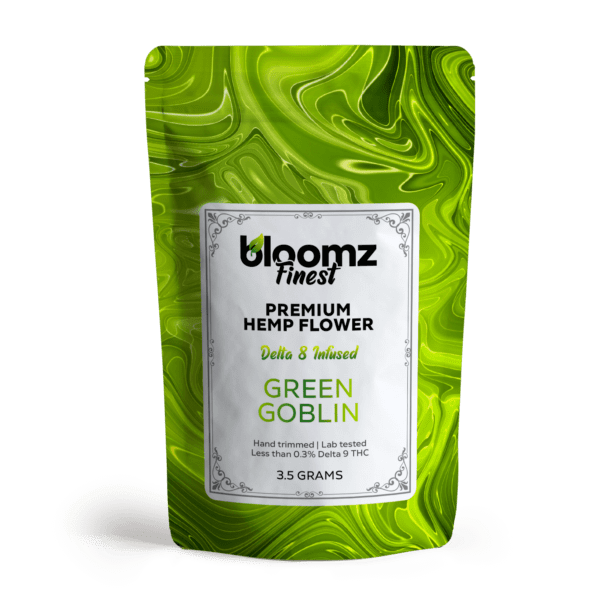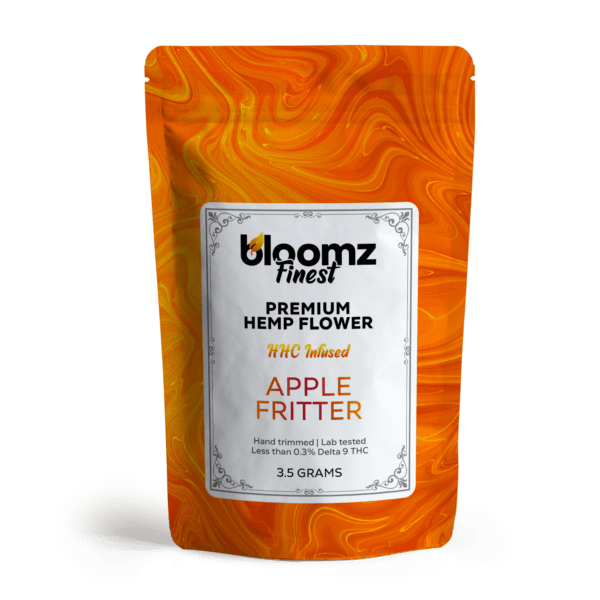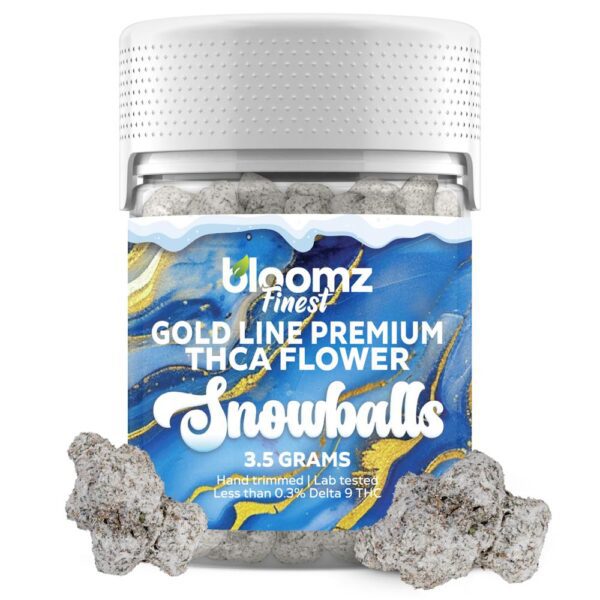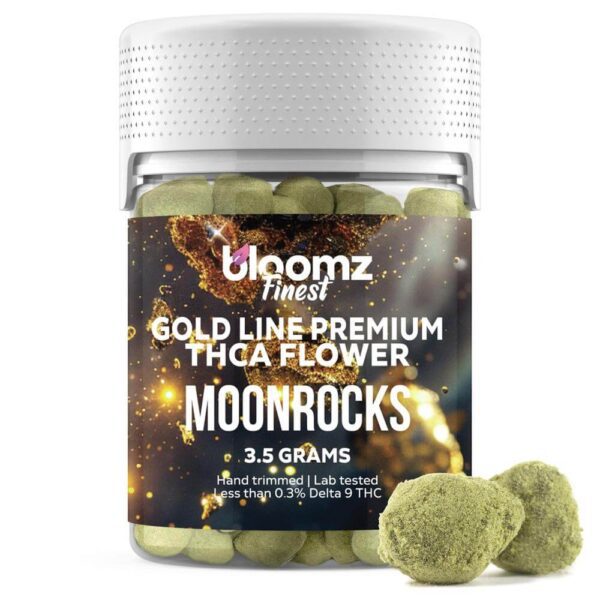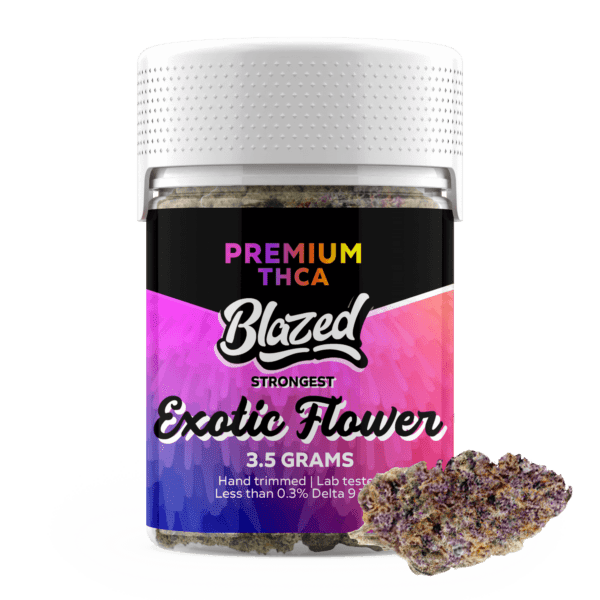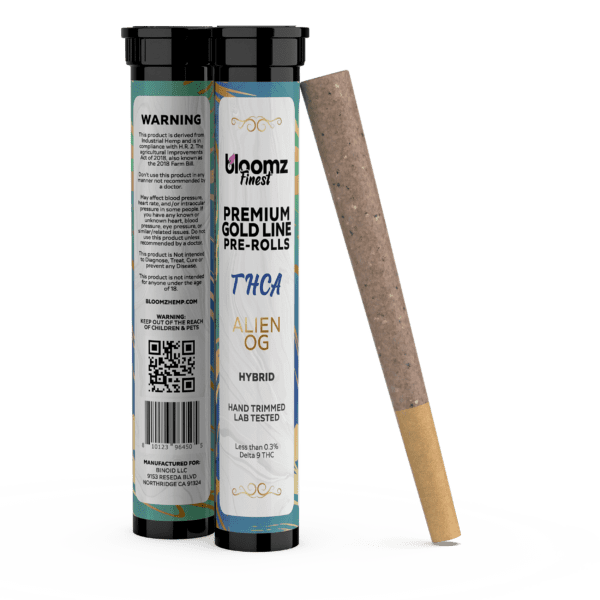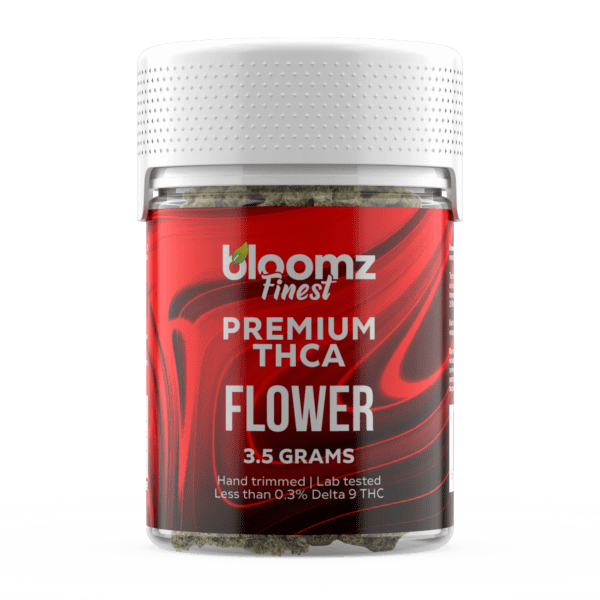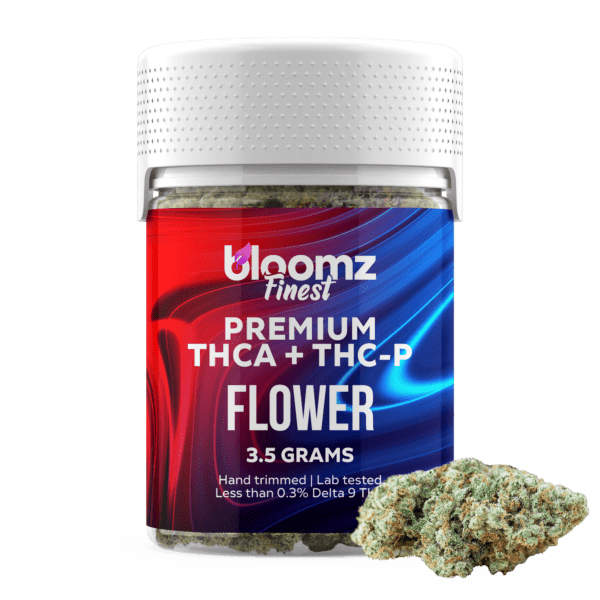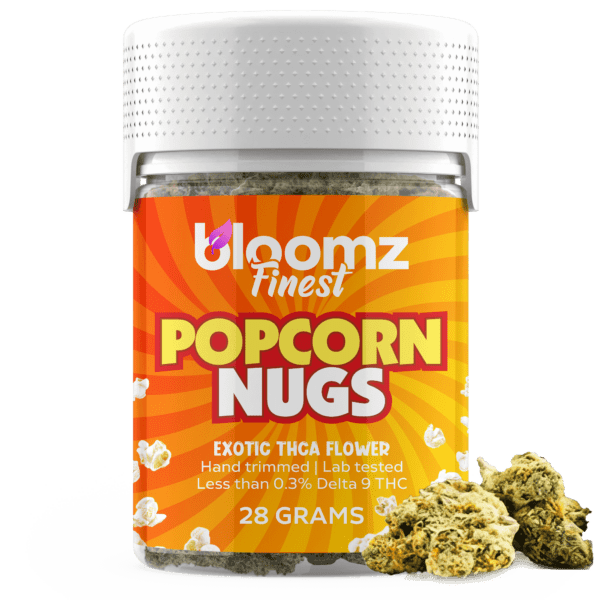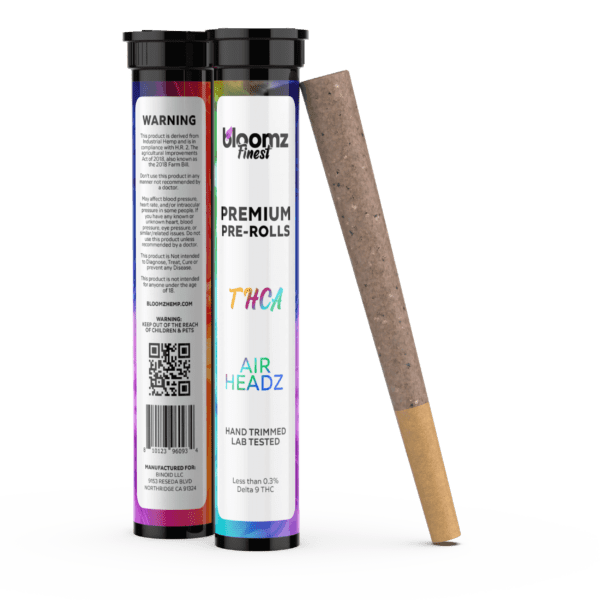There’s a unique sense of anticipation that comes with exploring something new, a blend of curiosity and excitement. It’s the feeling you get when you’re about to try a new dish from a celebrated chef or listen to a freshly released album from a favorite artist. In the world of cannabis, this feeling often accompanies the moment you first examine a new flower. You might admire its structure, inhale its complex aroma, and read the creative strain name on the label.
Yet, beyond these sensory and marketing layers lies a deeper, more objective story waiting to be told. This story is written not in prose, but in data, contained within a document that can seem intimidating at first glance: the lab report. To truly understand the flower in your hands—its potential, its purity, and its unique character—one must learn to read this document. It is the key that unlocks the door between subjective experience and scientific fact, empowering you to become the true curator of your own journey.
To Buy Cannabis Flower Click Here
Recommended products
-
THCA Flower – Indoor Exotics – Gold Line
$37.99$69.99 -
THCA Flower – Platinum Line
$49.99$79.99 -
THCA Flower – Mystery Reserve
$41.99$79.99 -
THCA Smalls
$149.99$256.99
First, a Quick Refresher on Cannabis Flower
Before we can decipher the story told by a lab report, it’s helpful to remember precisely what we are analyzing. The cannabis flower, or “bud”, is the reproductive organ of the female cannabis plant. Its surface is adorned with a dense forest of tiny, crystalline structures that look like a coating of frost. These are the trichomes. These microscopic, mushroom-shaped glands are the biological factories responsible for producing the vast majority of the compounds that make each strain unique.
Within these trichome heads, the plant synthesizes two main groups of compounds that are of interest to consumers. The first are the cannabinoids, which’re the primary drivers of the flower’s effects. The second are the terpenes, as these are simply aromatic oils that create the flower’s signature scent and flavor, from zesty lemon to earthy pine. The specific combination and concentration of these cannabinoids and terpenes, meticulously crafted within the trichomes, is what gives a flower its individual identity. A lab report, therefore, is essentially a detailed inventory of the chemical compounds produced by these tiny, powerful factories. It is a quantitative snapshot of the very essence of the flower, a blueprint of the experience it holds within.
What Exactly is a Lab Report Anyways?
The idea of a laboratory report might conjure images of complex scientific research, but in the world of consumer goods, it’s a standard and essential tool for quality control. A lab report, often called a Certificate of Analysis or COA, is a document issued by an accredited laboratory that verifies a product meets a certain set of specifications. You encounter the results of this kind of quality control every day, even if you don’t see the report itself.
Consider the world of high-end, single-origin coffee. When a specialty roaster purchases a micro-lot of beans from a farm in Ethiopia, they will often receive a detailed analysis. This report, or “cupping score sheet,” breaks down the coffee’s profile with remarkable detail: its specific flavor notes (e.g., “jasmine, bergamot, blueberry”), its acidity level, its body, its sweetness, and its overall score on a 100-point scale. This document does two things: it assures the roaster they are buying a high-quality, authentic product, and it gives them the information they need to market it accurately to consumers who want to know why this coffee is special. The cannabis COA functions in precisely the same way. It is a tool for verification, safety, and deep product knowledge, transforming a simple purchase into an informed investment.
Introducing the Cannabis COA and Why You Should Care
A cannabis Certificate of Analysis is a formal document that details the chemical makeup of a specific batch of cannabis product. It is generated by a state-licensed, third-party laboratory that has no affiliation with the grower or producer. This independence is crucial, as it ensures the results are objective and unbiased. The COA provides a comprehensive breakdown of a flower’s potency, its aromatic profile, and, most importantly, its safety. Understanding why you should care about reading a COA can be broken down into two equally important parts.
The Immediate Importance: A Guarantee of Safety
At its most fundamental level, the COA is your single greatest assurance that the product you are about to consume is safe and clean. The modern cannabis industry, especially in legal markets, is built on a foundation of consumer safety and transparency. The safety screening sections of the lab report are the ultimate proof of this commitment. Imagine choosing a beautiful-looking cannabis flower at a discount, only to find it provides a harsh, unpleasant experience.
Without a lab report, you’d have no way of knowing if it was contaminated with residual pesticides from the grow cycle, something that could be harmful when combusted and inhaled. Now imagine another scenario where a flower was improperly dried and stored, allowing for the growth of invisible mold spores. The COA’s microbial test is designed to catch this exact problem before it ever reaches you. The safety analysis is not a suggestion; it is a pass/fail gateway that protects the consumer from the potential dangers of irresponsible cultivation and handling. Reading this section provides invaluable peace of mind.
The Deeper Importance: From Consumer to Connoisseur
Beyond the crucial safety checks, the COA is a powerful tool for empowerment. In the not-so-distant past, consumers had to rely almost exclusively on a strain’s name and the anecdotal reports of others. This system was notoriously unreliable. A strain named “Blue Dream” from one grower could have a completely different chemical profile and offer a vastly different experience than a “Blue Dream” from another. The lab report shatters this ambiguity. It allows you to move beyond clever marketing and subjective reviews, giving you direct access to the hard data behind the cannabis flower.
By learning to read a COA, you can verify the exact potency of a product, ensuring the THC or CBD percentage on the label is accurate. You can analyze its unique terpene profile, which is the true key to predicting its likely aroma, flavor, and even the subtle character of the experience it may offer. It allows you to compare two different batches of the same strain and see how they differ chemically. Perhaps one batch has a higher concentration of the terpene Linalool, suggesting it might be more calming and floral than the last batch you tried. This level of insight transforms you from a passive consumer, subject to the whims of marketing, into an educated connoisseur who can make highly informed, data-driven decisions to consistently find the products that you enjoy most.
Recommended products
How to Read the Report – A Guided Tour of the COA
A cannabis lab report can seem dense and overwhelming at first glance, filled with chemical acronyms, units of measurement, and data tables. However, once you learn how to break it down section by section, it becomes a clear and incredibly useful guide. Let’s take a guided tour through a typical COA for cannabis flower, treating each section as a critical chapter in the flower’s story.
The Basics: Who, What, Where, and When
Before you even get to the potency numbers, look at the top of the report for the basic identifying information. This section establishes the document’s legitimacy and links it to your specific cannabis flower product. Let’s break it down for a moment:
A Micro-Essay on Lab Accreditation: The first detail to locate is the laboratory’s information, including its name, address, and state license number. However, the single most important piece of information in this header is the lab’s accreditation. Look for a symbol or statement indicating that the lab is ISO/IEC 17025 accredited. This is not just a fancy logo; it is the internationally recognized gold standard for the technical competence of testing and calibration laboratories. To achieve this status, a lab must undergo a rigorous, lengthy, and expensive audit by an independent, third-party accreditation body. This audit scrutinizes every aspect of the lab’s operations: the calibration and maintenance of its scientific instruments, the validation of its testing methods, the training and proficiency of its staff, its quality control procedures, and its data management systems. A lab that holds this accreditation has proven to the scientific community that its results are accurate, reliable, and reproducible. Conversely, a lab report from an unaccredited lab holds very little weight, as there is no independent verification of its quality or accuracy. Always prioritize products tested by an ISO 17025 accredited lab.
A Micro-Essay on Traceability and the Chain of Custody: The next critical section contains the sample information. This includes the Client/Producer (the grower or brand), the Strain Name, and most importantly, a unique Sample ID or Batch Number. This string of letters and numbers is the unbreakable link in the “chain of custody.” The chain of custody is a chronological paper trail documenting the journey of the sample from the moment it is collected from the cultivator’s harvest batch to the moment it is tested in the lab. This process ensures that the sample isn’t tampered with and that the results reported are tied to that specific batch and no other. Before you analyze any other part of the COA, you must verify that the batch number on the report matches the batch number printed on the packaging of the product you have purchased. If they do not match, you are looking at data for a different harvest, and the report is irrelevant to your cannabis flower. This step is your fundamental check for transparency and traceability.
The Main Event: The Cannabinoid and Terpene(s) Profile (The Potency Report)
This is the section that details the concentration of the primary active compounds in the cannabis flower. It is the core of the potency analysis and the part of the report that most people are immediately drawn to.
An In-Depth Look at Decarboxylation and the 0.877 Factor
When you first look at the cannabinoid results, you’ll see a list of acronyms, but the two most important for potency are THCA and Delta-9 THC. It is a common misconception that raw cannabis flower is full of the intoxicating compound Delta-9 THC. In reality, the living plant produces cannabinoids in a non-intoxicating acidic form. The main cannabinoid in most flower is THCA (Tetrahydrocannabinolic Acid). THCA itself won’t produce the classic euphoric effects. To do that, it must be converted into Delta-9 THC through a process called “decarboxylation”, which’s achieved by applying heat. When you smoke, vape, or cook cannabis, you are actively decarboxylating it.
Because of this, the “Total THC” listed on a lab report is the most important indicator of a flower’s potential potency. This number is not a simple addition of the THCA and Delta-9 THC percentages. During decarboxylation, the THCA molecule releases its acidic carboxyl group (COOH), which has its own molecular weight. This means the resulting Delta-9 THC molecule is slightly lighter than the original THCA molecule. To provide an accurate measure of the final potential THC, labs must account for this weight loss. They use a specific, standardized formula: Total THC = (THCA % * 0.877) + Delta-9 THC %.
The conversion factor of 0.877 is a constant derived from molecular masses. It represents the fact that after the carboxyl group is removed, the resulting THC molecule has only 87.7% of the mass of the original THCA molecule. So, if a flower has 25% THCA, a lab can’t just say it has 25% potential THC. They must first multiply that 25% by 0.877 (which equals 21.9%) and then add any small amount of pre-existing Delta-9 THC to arrive at the true Total THC value. A reliable lab report will show you the individual values for THCA and Delta-9 THC and will also perform this calculation for you, presenting a final, clear “Total THC” or “Max THC” number. This is the figure you should use to gauge the flower’s potency.
The Minor Cannabinoid Profile: Detailed Profiles and Quantified Levels
While Total THC often gets the spotlight, this next section of the lab report provides a more complete understanding of the flower’s unique chemical fingerprint. It details the precise profiles and quantified levels of lesser-known, or “minor,” cannabinoids. These compounds, while often present in smaller concentrations, can significantly influence the overall character and nuanced effects of the experience. Analyzing these numbers allows you to move beyond a simple measure of potency and appreciate the full spectrum of what the plant has produced, giving you a deeper insight into the flower’s composition, specifically as it pertains to the following:
CBD & CBDA (Cannabidiol & Cannabidiolic Acid): This is the most well-known non-intoxicating cannabinoid. The report will show quantified levels for both its raw acidic form (CBDA) and any active CBD. In most THC-dominant flower, the Total CBD level will be very low (typically under 1%). However, its presence, even in small amounts, is believed by many users to contribute a sense of balance to the overall experience. For CBD-dominant flower, this section will show high percentages of CBD/CBDA, indicating a completely different chemical profile and set of effects.
CBG & CBGA (Cannabigerol & Cannabigerolic Acid): Often called the “mother cannabinoid,” CBGA is the chemical precursor from which the plant synthesizes other major cannabinoids like THCA. Because most of the CBGA is converted during the plant’s growth, its quantified level in the final flower is usually very low (under 1%). Seeing a report with a high level of Total CBG indicates that the strain was specifically bred to feature this compound, which is often associated with a clear-headed and focused experience.
CBN (Cannabinol): The quantified level of CBN on a lab report is a critical indicator of the flower’s freshness and storage history. Unlike other cannabinoids, CBN is not produced in significant amounts by the plant itself. It is the primary degradation product of THC; as THC ages and is exposed to oxygen and UV light, it converts into CBN. Therefore, a fresh, properly cured, and well-stored flower should have a CBN level close to 0%. If a COA shows a quantified level of CBN at 0.5% or higher, it is a strong data point suggesting the flower is old or has been stored improperly, which also means its THC and terpene content have likely degraded.
Other Minor Cannabinoids (CBC, THCV, etc.): Depending on the lab’s testing capabilities, you may also see quantified levels for other trace cannabinoids like CBC (Cannabichromene) or THCV (Tetrahydrocannabivarin). These are typically present in very small amounts but are believed to contribute to the nuanced “entourage effect,” where the full spectrum of compounds works together to create a more complete and unique experience. Their presence further details the flower’s distinct chemical identity.
The Flavor Blueprint: The Terpene Profile
This section is your key to understanding the sensory experience of the cannabis flower—its aroma and flavor. A comprehensive COA will include a terpene analysis, listing the top 8-15 terpenes present in the sample and their concentrations, usually reported in percentages. When reading this section, look for the dominant terpenes, the 2-4 terpenes with the highest percentages, as these will dictate the overall aromatic character, such as:
Myrcene: As the potential bedrock of a strain’s aroma, a high Myrcene percentage on a COA suggests a deeply earthy, musky, and herbal scent profile, often with the fruity notes of ripe mango or the spicy character of cloves. It is the classic “skunky” cannabis aroma. Its dominance on a lab report points towards an experience that is likely to be profoundly relaxing and sedative in nature, a perfect choice for an evening of chilled-out bliss.
Limonene: Seeing Limonene at the top of a terpene analysis is a clear indicator of a bright, zesty, and refreshing citrus aroma. The lab report is quantitatively confirming the promise of lemon, orange, or grapefruit peel. A high Limonene percentage is a data point that strongly suggests an experience that will be uplifting, cheerful, and euphoric. It is the aromatic signature of strains often chosen for creative pursuits and social energy.
Caryophyllene: When Caryophyllene leads a terpene profile, the COA is telling you to expect a spicy, peppery, and pungent fragrance with rich, woody undertones, similar to black pepper or cloves. Because it is the only terpene that also acts like a cannabinoid, its prominence on a lab report points to a unique, full-bodied experience often associated with physical comfort and gentle, soothing relaxation.
Linalool: A high Linalool reading on a lab report is a quantitative promise of a soft, sweet, and delicate floral aroma, with the unmistakable character of lavender. It suggests a less aggressive and more “perfumey” scent profile. This data point is a strong indicator of a strain likely to provide a calming, serene, and peaceful experience, perfect for unwinding.
Pinene: If Pinene is a dominant terpene on the COA, you can expect a sharp, clean, and invigorating scent of a pine forest. The data points to a crisp, resinous fragrance that is often associated with a feeling of alertness, clarity, and focus. It’s the aromatic profile many seek when they desire a clear-headed and attentive state of mind.
Recommended products
-
THCA Moonrocks – Gold Line
$57.99$89.99 -
Blazed Exotic THCA Flower
$36.99$79.99 -
Exotic THCA Pre-Rolls Gold Line – 3-Pack/6 Pack
$36.99$69.99
The Safety Check: The Contaminant Analysis
This is arguably the most critical section of the entire lab report. It provides the pass/fail results for a battery of safety tests designed to ensure the product is free from harmful contaminants. You want to see a clear “Pass” for every single category:
Pesticides: This test screens for dozens of specific chemical pesticides and fungicides. Cannabis is a bioaccumulator, meaning it can absorb compounds from its environment. The use of unapproved pesticides during cultivation can lead to harmful residues on the final product, which can be dangerous when inhaled. The report will list the specific pesticides tested for and show a result, typically “Pass” or “Fail,” along with the detected level and the legal action limit. Terms like “ND” (None Detected), “LOD” (Limit of Detection), and “LOQ” (Limit of Quantitation) are important. LOD is the smallest amount the machine can see, while LOQ is the smallest amount it can confidently measure. A result below the LOQ is considered safe.
Heavy Metals: This screen tests for the presence of toxic heavy metals like lead, arsenic, mercury, and cadmium. As a bioaccumulator, the cannabis plant is particularly effective at drawing these metals up from contaminated soil, water, or even fertilizers. These metals can accumulate in the body and pose significant health risks. A “Pass” on this test confirms the levels are below the safe threshold established by state regulations.
Microbials & Mycotoxins: This two-part test looks for biological contaminants. The microbial screen checks for the total count of yeast and mold, as well as for the presence of specific pathogenic bacteria like Salmonella and E. coli. The mycotoxin screen is even more specific, testing for the toxic chemical byproducts that certain molds, like Aspergillus, can produce. These substances, such as aflatoxins, can be harmful even if the mold itself is no longer active. A “Pass” in both these categories is essential for ensuring the flower is clean and safe.
Water Activity & Moisture Content: This is a crucial safety check related to the microbial risk. Moisture Content measures the total percentage of water in the sample. Water Activity measures the amount of available water that could be used by microorganisms to grow. A cannabis flower can have a decent moisture content but a low water activity, making it safe. A high water activity level (typically above 0.65 aw) creates a breeding ground for mold and mildew and would result in a “Fail” on the lab report.
Putting It All Together: A Final Checklist
Navigating a full Certificate of Analysis for the first time can feel like learning a new language, with its own unique vocabulary and structure. While understanding the deep science behind each section is rewarding, the practical, day-to-day application should be simple and efficient. The goal is to distill all that complex data into a quick, repeatable process that empowers you to make a confident decision in just a minute or two. This checklist synthesizes the most critical checkpoints from our deep dive into a streamlined final review. Think of these things below as your pre-flight inspection, ensuring every aspect of the flower is cleared for a safe and enjoyable journey:
Verify Lab and Batch: First, confirm the report is from an ISO/IEC 17025 accredited lab. Then, match the batch number on the COA exactly to the batch number on your product’s packaging to ensure you are looking at the correct data.
Confirm All Safety Screens “Pass”: This is the most important step. Scan the contaminant analysis section and verify a clear “Pass” result for all tests, including pesticides, heavy metals, microbials, and mycotoxins. Do not proceed if any category has failed.
Check Total Cannabinoid Potency: Look for the final calculated numbers for “Total THC” and “Total CBD”. This gives you the most accurate picture of the flower’s primary cannabinoid strength and its likely psychoactive potential.
Identify the Dominant Terpenes: You don’t need to analyze every one. Simply identify the top two or three terpenes with the highest percentages to get a strong indication of the flower’s likely aroma, flavor, and the nuanced character of its effects.
Glance at the Dates: Check the sample collection or testing date on the report. This gives you a sense of how recently the product was tested and can be an indicator of its overall freshness on the shelf.
From Data to Delight
Learning to read a cannabis flower lab report is a skill that permanently transforms your relationship with the plant. It is a bridge from the world of branding and strain lore into the realm of verifiable science and data. Initially, it may feel like you’re deciphering a complex scientific text, but with practice, it becomes a simple and empowering act of verification.
Understanding a COA allows you to look past a clever name or a pretty package and see the true story of the flower—its precise potency, its unique aromatic signature, and its verified purity. This knowledge elevates you from a customer to a connoisseur, an empowered consumer who can navigate the market with confidence, ensuring every experience is safe, informed, and perfectly aligned with your own preferences.

